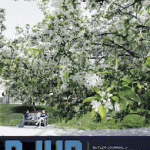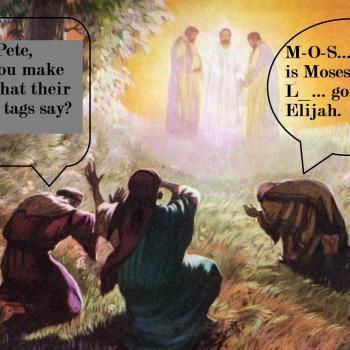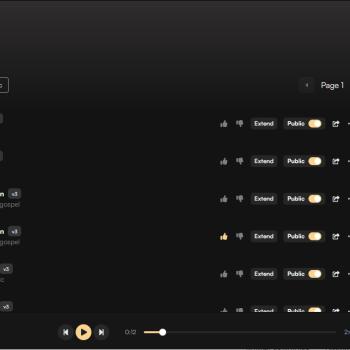I love teaching my course on the Bible and music! In the class period dedicated to the Exodus, we ranged through so many subjects, across thousands of years.
We started off in Exodus 15, thinking about the “Song of the Sea” and the way music was used in times before widespread literacy and writing technology to convey information and pass it on from one generation to the next. (Schoolhouse Rock got a shout-out in that context). It is quite possible that the “Song of the Sea” represents a very old piece of tradition embedded in the narrative. Notice for instance how it envisages horses and their riders being thrown into the sea – not a natural way of referring to the sea being thrown upon them, as happens in the Exodus narrative in its present form.
We then proceeded to African-American spirituals, focusing on the example of “Wade in the Water.” That song allowed me to make a connection to the first concrete example of the intersection of the Bible and music that I highlighted on the first day of class, “Dry Bones,” which many of them know as a children’s song about anatomy, missing in that form the fact that the imagery comes from Ezekiel. In that song as in “Wade in the Water,” imagery about the rescuing or restoration of the people of Israel is in view, but takes on an element of slow progress in the place of miraculous divine intervention. The bones connect one by one, step by step. The water does not part, but wading through it you might be able to cause those pursuing runaway slaves to lose your scent.
We then moved on to Arnold Schoenberg’s Moses und Aron, which I have blogged about before. In connection with that, I got students thinking about poetry, what used to define it, and why those characteristics were set aside. Most of us prefer poetry to prose, at least within the cards that we receive from those who wish to tell us they love us. But we don’t appreciate so much those poems that begin “Roses are red, violets are blue…” Students were able to articulate why that is the case: because these involve little creativity, they are unimpressive and unoriginal. The same thing happened in music: the rules that once summed up that which we found beautiful and pleasing came to bore us, and so we pushed the envelope and prodded at the rules until eventually, Schoenberg came along and suggested first discarding the rules and then putting a new rule in their place to bring order to the resulting chaos.
For more on that topic, see Matt Page’s recent post about the movie version of Schoenberg’s Moses und Aron at the Bible Films Blog. It really does provide an excellent exploration of the work’s musical significance.
We ended back in Exodus 15, having passed by way of Metallica’s “Creeping Death” and The Prince of Egypt. The latter segued nicely into a question about Exodus 15 and texts like it. Is the Bible a musical? What does it mean that it is peppered with musical numbers interspersed throughout the narrative?
Here’s my favorite YouTube video of Metallica’s “Creeping Death,” which was inspired not only by the Exodus story, but specifically by the movie The Ten Commandments, and so it is fitting to bring the two together in this way. So let it be written. So let it be done.














